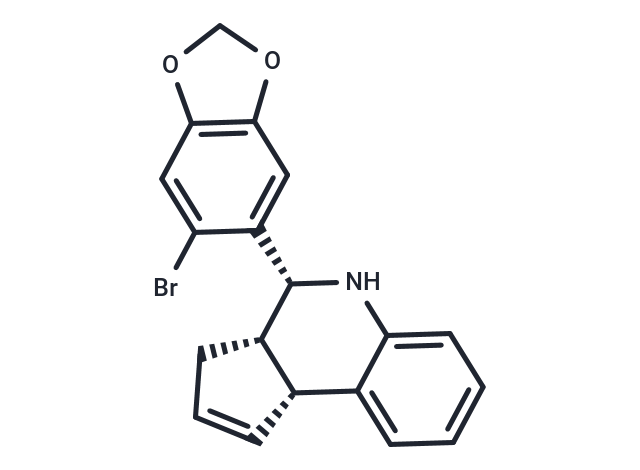Shopping Cart
- Remove All
 Your shopping cart is currently empty
Your shopping cart is currently empty

G15 is a cell-permeable non-steroidal antagonist of GPER (Ki = 20 nM)

| Pack Size | Price | Availability | Quantity |
|---|---|---|---|
| 1 mg | $33 | In Stock | |
| 5 mg | $75 | In Stock | |
| 10 mg | $125 | In Stock | |
| 25 mg | $228 | In Stock | |
| 50 mg | $389 | In Stock | |
| 100 mg | $585 | In Stock | |
| 1 mL x 10 mM (in DMSO) | $83 | In Stock |
| Description | G15 is a cell-permeable non-steroidal antagonist of GPER (Ki = 20 nM) |
| Targets&IC50 | GPER:20 nM(Ki) |
| In vivo | G-15 antagonizes the anti-depressive effects of estrogen in vivo[1]. |
| Animal Research | G15 and G1 were first dissolved in DMSO and diluted with saline; the final concentration in DMSO was 1 mM. Desipramine and E2 (cyclodextrin-encapsulated, 4-5.5% E2) were dissolved in saline solution and DMSO was added to a final concentration of 1 mM. An appropriate vehicle-treated group (saline with 1 mM DMSO) was included as a control (sham). All solutions were freshly prepared before each experimental series. Independent groups of mice (n=12-16) were treated with two consecutive intraperitoneal injections as follows: vehicle solution + vehicle solution (sham group); vehicle + G-1 (indicated amount in nmol); vehicle + desipramine (10mg/kg); G15 (10nmol/mouse) + desipramine (10mg/kg); G15 (10nmol/mouse) + G-1 (1nmol/mouse); vehicle + G15 (10nmol/mouse); vehicle + soluble E2 (5 mg/kg); G15 (25nmol/mouse) + soluble E2 (5 mg/kg). The second compound was injected 15 min (7 min for E2) after the first injection and the tail suspension test performed 30 min after the second injection[1]. |
| Molecular Weight | 370.24 |
| Formula | C19H16BrNO2 |
| Cas No. | 1161002-05-6 |
| Smiles | Brc1cc2OCOc2cc1[C@@H]1Nc2ccccc2[C@@H]2C=CC[C@H]12 |
| Relative Density. | 1.472 g/cm3 (Predicted) |
| Storage | Powder: -20°C for 3 years | In solvent: -80°C for 1 year | Shipping with blue ice. | |||||||||||||||||||||||||||||||||||
| Solubility Information | DMSO: 41.67 mg/mL (112.55 mM) | |||||||||||||||||||||||||||||||||||
Solution Preparation Table | ||||||||||||||||||||||||||||||||||||
DMSO
| ||||||||||||||||||||||||||||||||||||

Copyright © 2015-2024 TargetMol Chemicals Inc. All Rights Reserved.